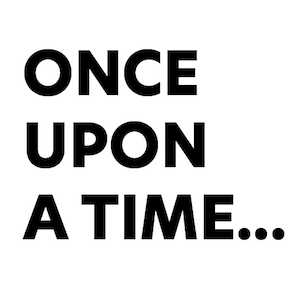9 Business Storytelling Tips to Guide Your Next Presentation

Who doesn’t enjoy a good story? Storytelling is a natural form of communication that is used in every culture. It is an age-old tradition passed down for generations to help others understand backgrounds, beliefs, and experiences. A good story engages various parts of the brain and draws people in, grabbing their emotions, evoking empathy with the characters, and allowing them to visualize the story elements. Listeners stay tuned wanting to know more about the journey unfolding, keeping their attention engaged and imaginations active.
In fact, many scientists believe that humans are hardwired for storytelling. Neuroscientist Uri Hasson of Princeton University is just one expert who has done research showing the effects of storytelling on the brain. Using functional magnetic resonance imaging (fMRI), Hasson and team scanned the brain activity of several participants while they listened to a story. Once the story began, the brain activity of the listeners synced up on a deep level, and “neural entrainment” spread across all brains in higher-order areas including the frontal cortex and the parietal cortex. This deep alignment did not happen during other tests in the study. For example, when the story recording was played backwards, the brains showed some alignment of neural responses only in the auditory cortices. Similarly, listening to random scrambled words from the story or entire sentences cited out of order also did not reach very deep in the brain. Even more surprising, the storyteller’s brain activity was studied while telling the story and also synched with the listeners. Hasson concludes that an effective storyteller causes the neurons of an audience to closely sync with the storyteller’s brain, which has significant implications for presenters.
Using storytelling as a tool in the business world is gaining lots of traction. However, despite studies on this topic showing how well-crafted stories can be more memorable and persuasive, the value of this art has not been completely accepted or practiced. So whether delivering training about a complex idea, proposing a solution to prospective customers, or presenting a business plan for a new start-up, you’ll want to brush up on your storytelling techniques.
To help deliver impactful stories during your next presentation, take a look at these useful tips. Also included are insights gathered from business storytelling professionals’ websites that give more perspective on how to put the tips to work.
 Understand your audience. Knowing your audience’s pain points and what they value and what they don’t will help you tell the right story. Find out what topics interest your target audience or what other brands or people they trust. Try to determine if there are any shared experiences to highlight. Really understanding who you are talking to is a crucial first step in your storytelling journey. Nancy Duarte is founder of Duarte, a firm that helps businesses realize the power of persuasive visual stories and presentations. In explaining how to identify your target audience, Nancy says, “Make sure you find common ground with the people to whom you’re presenting. Common ground helps create empathy; if an audience can relate to the story you are telling them, they’ll empathize with you and may begin to care.”
Understand your audience. Knowing your audience’s pain points and what they value and what they don’t will help you tell the right story. Find out what topics interest your target audience or what other brands or people they trust. Try to determine if there are any shared experiences to highlight. Really understanding who you are talking to is a crucial first step in your storytelling journey. Nancy Duarte is founder of Duarte, a firm that helps businesses realize the power of persuasive visual stories and presentations. In explaining how to identify your target audience, Nancy says, “Make sure you find common ground with the people to whom you’re presenting. Common ground helps create empathy; if an audience can relate to the story you are telling them, they’ll empathize with you and may begin to care.”
 Know your message. Be sure to understand what you are trying to convey to the audience and how your story relates to the action you want them to take. How do you want the audience to feel about your message? Of course at some point in the sales cycle, your presentation needs to cover product features. And at some point at the annual kick-off meeting, stakeholders need to hear facts and figures. However, that information should be delivered in an interesting way to make it memorable. Mike Wittenstein founded Storyminers and views stories as a strategic business tool. In an interview blog he explains, “Instead of sharing stories about the numeric outcomes a leader hopes for, develop clear storylines that let people see and feel what the journey of getting to the goal will be like for them.”
Know your message. Be sure to understand what you are trying to convey to the audience and how your story relates to the action you want them to take. How do you want the audience to feel about your message? Of course at some point in the sales cycle, your presentation needs to cover product features. And at some point at the annual kick-off meeting, stakeholders need to hear facts and figures. However, that information should be delivered in an interesting way to make it memorable. Mike Wittenstein founded Storyminers and views stories as a strategic business tool. In an interview blog he explains, “Instead of sharing stories about the numeric outcomes a leader hopes for, develop clear storylines that let people see and feel what the journey of getting to the goal will be like for them.”
 Ensure your story has a structure. A story should include specific time periods and names and relatable characters. And it needs to have a beginning (set-up), a middle (contrast or conflict), and an end (resolution and key takeaways). The contrast in the story creates drama. The current frustrations your audience faces can be contrasted with the bright future that’s ahead. Consultant firm The Hoffman Agency has a business storytelling blog that sums it up nicely: “…the concept of contrast is one technique that always resonates with participants. The old way vs. the new way. Before vs. after. With vs. without. All deliver a form of contrast that resonates with the human brain.”
Ensure your story has a structure. A story should include specific time periods and names and relatable characters. And it needs to have a beginning (set-up), a middle (contrast or conflict), and an end (resolution and key takeaways). The contrast in the story creates drama. The current frustrations your audience faces can be contrasted with the bright future that’s ahead. Consultant firm The Hoffman Agency has a business storytelling blog that sums it up nicely: “…the concept of contrast is one technique that always resonates with participants. The old way vs. the new way. Before vs. after. With vs. without. All deliver a form of contrast that resonates with the human brain.”
 Be authentic. Business storytelling should not be fictional. If the audience can relate to a real-life story, you are making a connection and building trust. And people like to do business with companies they trust. “Listeners sense authenticity and if they don’t see it, they will reject the story and the teller. The leader’s rejected story will become fodder for the powerful ‘water cooler’ stories and will work against the leader’s efforts,” explains Molly Catron, an organizational consultant, storyteller, and keynote speaker who works with various businesses.
Be authentic. Business storytelling should not be fictional. If the audience can relate to a real-life story, you are making a connection and building trust. And people like to do business with companies they trust. “Listeners sense authenticity and if they don’t see it, they will reject the story and the teller. The leader’s rejected story will become fodder for the powerful ‘water cooler’ stories and will work against the leader’s efforts,” explains Molly Catron, an organizational consultant, storyteller, and keynote speaker who works with various businesses.
 Use a conversational tone. Use a conversational tone and common words to help your audience relate to you as a person. You will come across friendly and put the audience at ease. Ian Sanders, a consultant, business storyteller and author advises that stories should be kept simple. You should speak to the business audience as if you are speaking to your friends or family. You do not need to look through a thesaurus just because you’re presenting in a business context.
Use a conversational tone. Use a conversational tone and common words to help your audience relate to you as a person. You will come across friendly and put the audience at ease. Ian Sanders, a consultant, business storyteller and author advises that stories should be kept simple. You should speak to the business audience as if you are speaking to your friends or family. You do not need to look through a thesaurus just because you’re presenting in a business context.
 Remember the audience is the hero. The product should not be the hero and neither should the presenter. Your audience should be able to see themselves as the hero in your story. Can they relate to the experience you’re telling? The Buzz Factoree’s Gail Kent talks about how important it is for businesses to tell stories through great content. But, the business needs to act like the mentor and allow the customer to see himself in the story as the hero.
Remember the audience is the hero. The product should not be the hero and neither should the presenter. Your audience should be able to see themselves as the hero in your story. Can they relate to the experience you’re telling? The Buzz Factoree’s Gail Kent talks about how important it is for businesses to tell stories through great content. But, the business needs to act like the mentor and allow the customer to see himself in the story as the hero.
 Be visual. Countless studies reveal that using visuals helps improve engagement and retention. Visual storytelling allows complex data to be broken down into smaller digestible and memorable chunks of information. Give your presentation new dimension with relevant images, animated GIFs, or short videos that guide the narrative of your story. “Stories are more about pictures than words. When you can see the story happening you get the best impact. The easiest way to make a story more visual is to zoom into small moments rather than staying at the stratospheric level,” says Shawn Callahan. He is the founder of Anecdote, a firm that helps companies master business storytelling.
Be visual. Countless studies reveal that using visuals helps improve engagement and retention. Visual storytelling allows complex data to be broken down into smaller digestible and memorable chunks of information. Give your presentation new dimension with relevant images, animated GIFs, or short videos that guide the narrative of your story. “Stories are more about pictures than words. When you can see the story happening you get the best impact. The easiest way to make a story more visual is to zoom into small moments rather than staying at the stratospheric level,” says Shawn Callahan. He is the founder of Anecdote, a firm that helps companies master business storytelling.
 Make human and emotional connections. Like visuals, emotions also enhance retention. On top of that, research by neuroscientist Antonio Damasio shows that emotions play a vital part in decision-making. His findings have big implications for presenters who are trying to persuade audiences to take action. Doug Stevenson is the founder and president of Story Theater International, a speaking, training, and consulting company that delivers corporate storytelling advice. In one of his keynote speeches Doug explains, “Speak from your head, deliver your content, deliver the message that you know you have to deliver, but keep your heart wide open so that they feel who you are…they have to feel that while you deliver your content.” Be approachable, craft a connection aligned to your brand, and think about what you want the audience to feel.
Make human and emotional connections. Like visuals, emotions also enhance retention. On top of that, research by neuroscientist Antonio Damasio shows that emotions play a vital part in decision-making. His findings have big implications for presenters who are trying to persuade audiences to take action. Doug Stevenson is the founder and president of Story Theater International, a speaking, training, and consulting company that delivers corporate storytelling advice. In one of his keynote speeches Doug explains, “Speak from your head, deliver your content, deliver the message that you know you have to deliver, but keep your heart wide open so that they feel who you are…they have to feel that while you deliver your content.” Be approachable, craft a connection aligned to your brand, and think about what you want the audience to feel.
 Sell your story, not your product. Of course you have to believe in what you’re selling or offering, otherwise you risk your story not coming across in a genuine way. However, as Michael Margolis, Founder & CEO of Get Storied states, “People don’t really buy a product, service, or idea. They buy the story that’s attached to it.” Your story should focus on the outcome that the audience needs.”
Sell your story, not your product. Of course you have to believe in what you’re selling or offering, otherwise you risk your story not coming across in a genuine way. However, as Michael Margolis, Founder & CEO of Get Storied states, “People don’t really buy a product, service, or idea. They buy the story that’s attached to it.” Your story should focus on the outcome that the audience needs.”
Perfecting storytelling techniques is an investment on both a personal and business level, but one that is sure to pay off. The need to present more compelling, visual stories is essential to differentiating your brand. If you are still not convinced that storytelling is vital in the business world, just search job titles containing “storytelling” at sites like Glassdoor.com, ZipRecruiter, or LinkedIn. You’ll see how popular this skill is becoming.

